|
Create a new App |
Scroll Previous Topic Top Next Topic More |
In order to create a new app with the CSV and XES Import Wizard, perform the following steps:
1.Select the Template App and the connection where the event log should be stored
|
Please make sure that the selected app starts with the string mpmX_ProcessMining_Template. |

2.Select the csv or xes file that you want to upload. The MEHRWERK GmbH got the XES certification by the IEEE Task Force in early 2021 for the product MEHRWERK ProcessMining (mpmX).
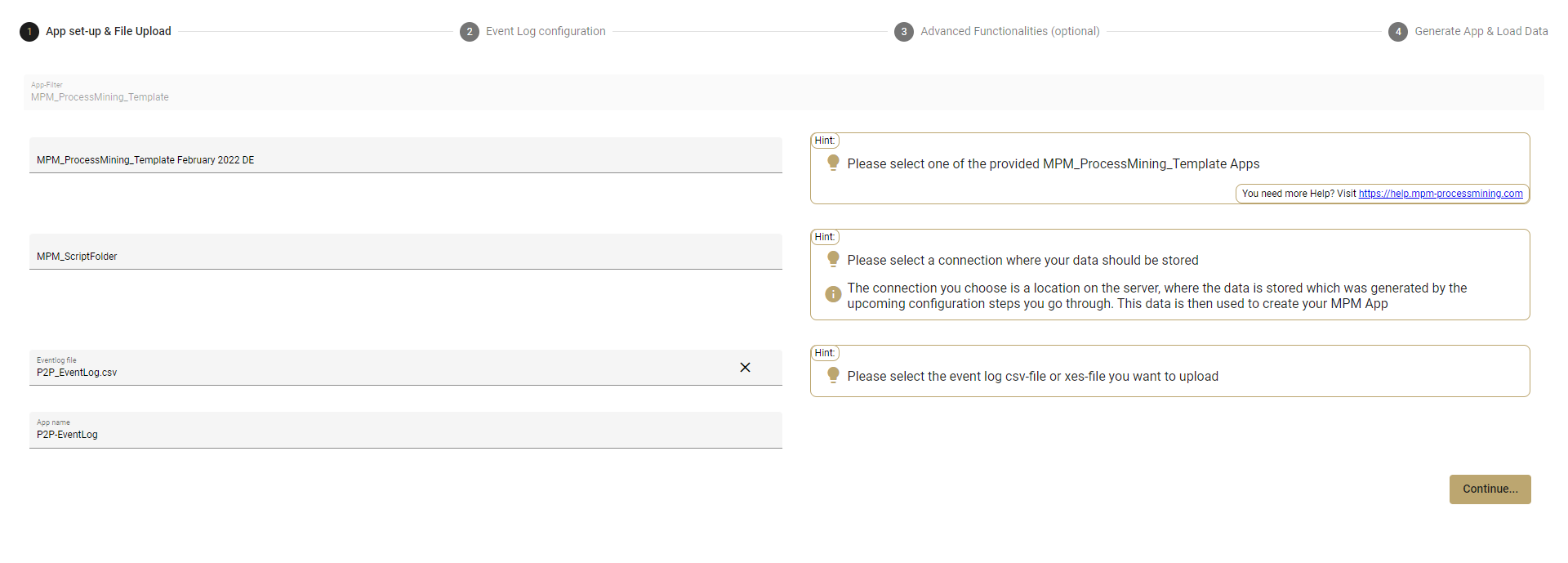
3.Map required fields by selecting the corresponding label to the desired column. Set one column as ActivityType, one as CaseID, one as StartTimestamp and one as EndTimestamp, or if you only have one Timestamp, map it as ActivityStartAndEndTimestamp.
If you have case context data in your event log, assign the columns to the fields CaseDimension. If you have a case geo-information in your event log, assign it to the geofield. An Activity Type ID will be generated automatically by the Import Wizard, if you have an ID already or a sorting criteria, you might us it as SortingColumn. Just above, the separator can be specified, choosing between comma, semicolon and space. Furthermore, you can include or exclude the fieldnames in the preferences section.
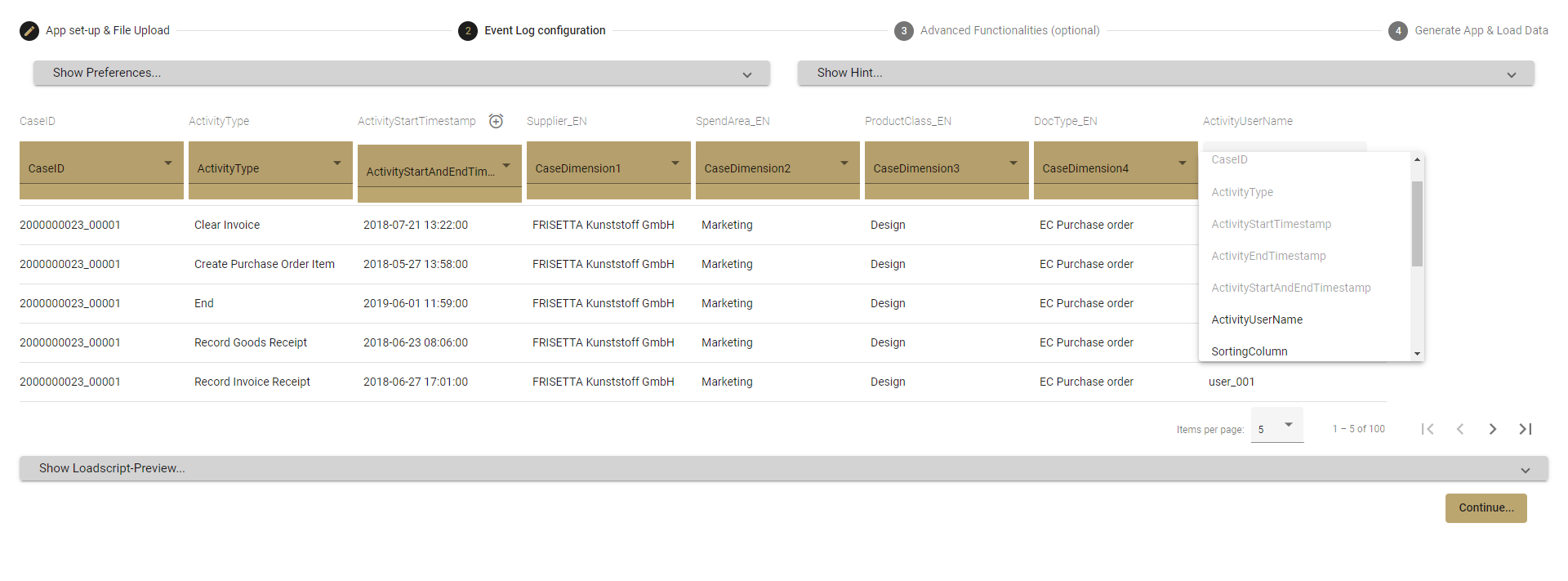 |
4. Specify your timestamp format using the small clock icon next to the ActivityStartTimestamp column.
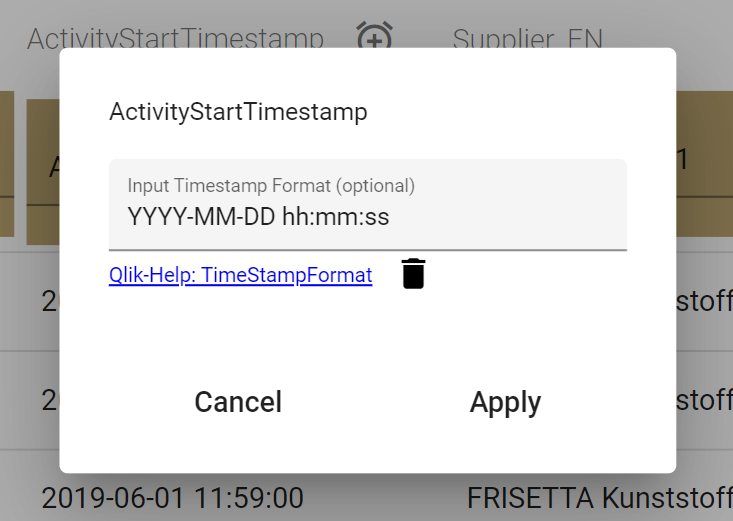 |
| The gray box at the bottom of this sheet displays the LoadScript preview. Here you can see the EventLog table with the corresponding fields you just defined. The "Continue..." button brings you to the next screen where you can configure custom lead times, groups, process finished filter, conformance checking and the root cause analysis. |

5.The first option you have is to adjust some general measures. Use the Advanced Customization tab to set the process description, case name, and customize the timestamp format, among other things..

6.To configure the shift calender open the tab Shift Calendar. Click on "Add Shift..". and select a weekday. Add the start time and end time for the shift. You can delete the shift by clicking on the x symbol on the left side.
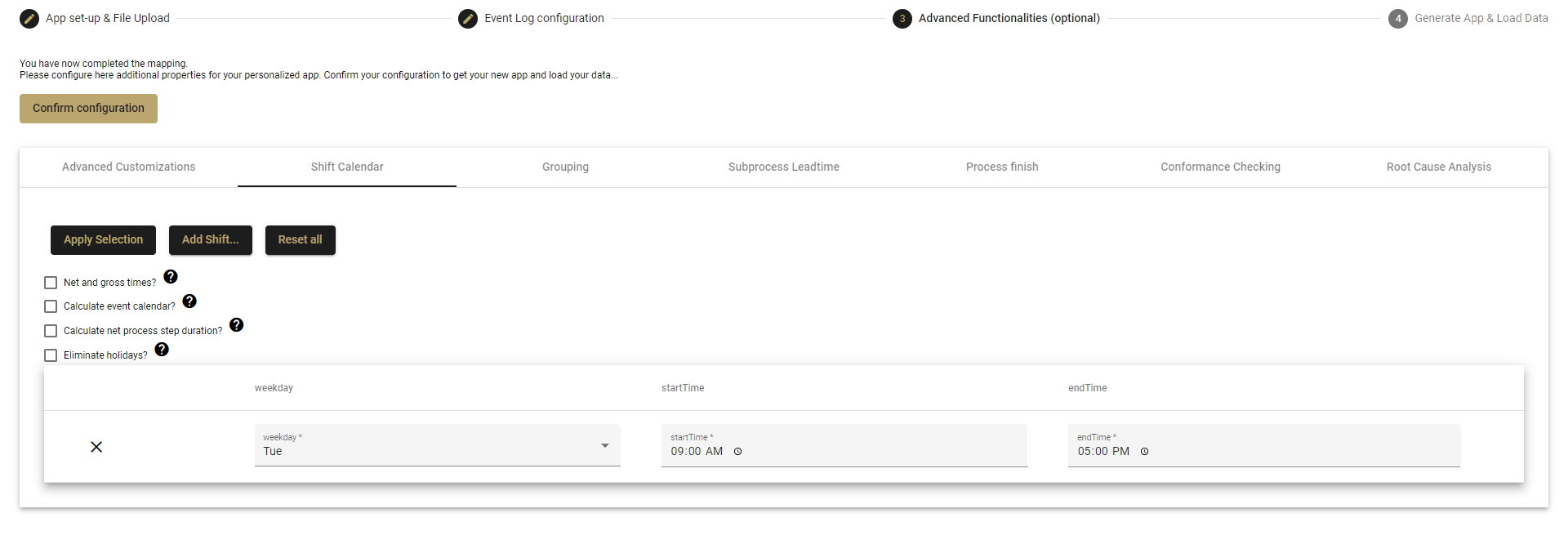
| For further configuration of the Shift Calender there are four options: |
a)Calculate net and gross time: Choose if an all time-related values will be expressed as net time. If the variable is active and the shift calendar is set, then two columns for each time-related field will created (e.g. CaseLeadTime and NetCaseLeadTime).
b)Calculate event calendar: Choose if you want to use the event calender or not. Note, If the calender is calculated, the script performance will slow down. The event Calendar is needed for displaying the shift in which an event took place.
c)Calculate net process step duration: Choose if you like to calculate the net process step duration or not. Have in mind: if work was done outside of a shift, then the process step duration is reduced, although work was done.
d)Eliminate holidays: Choose if you like to eliminate holidays by activating this option. Deactivate if you would like to ignore holidays. When activated, holidays will not be counted as workdays.
When the shifts are completely defined click on "Apply Selection" to confirm.
 |
7.To enable Grouping with the wizard select the tab Grouping on the configuration step.
| Click Add Group and a new group appears in the empty space on the right of the activity list. Give your group a name by clicking on the pencil-symbol. Then drag and drop the activities below the group. You can add several groups, switch activities from one group to another. Once your groups are defined click on Apply Grouping. You can also delete a group by clicking on the x icon on its right. |
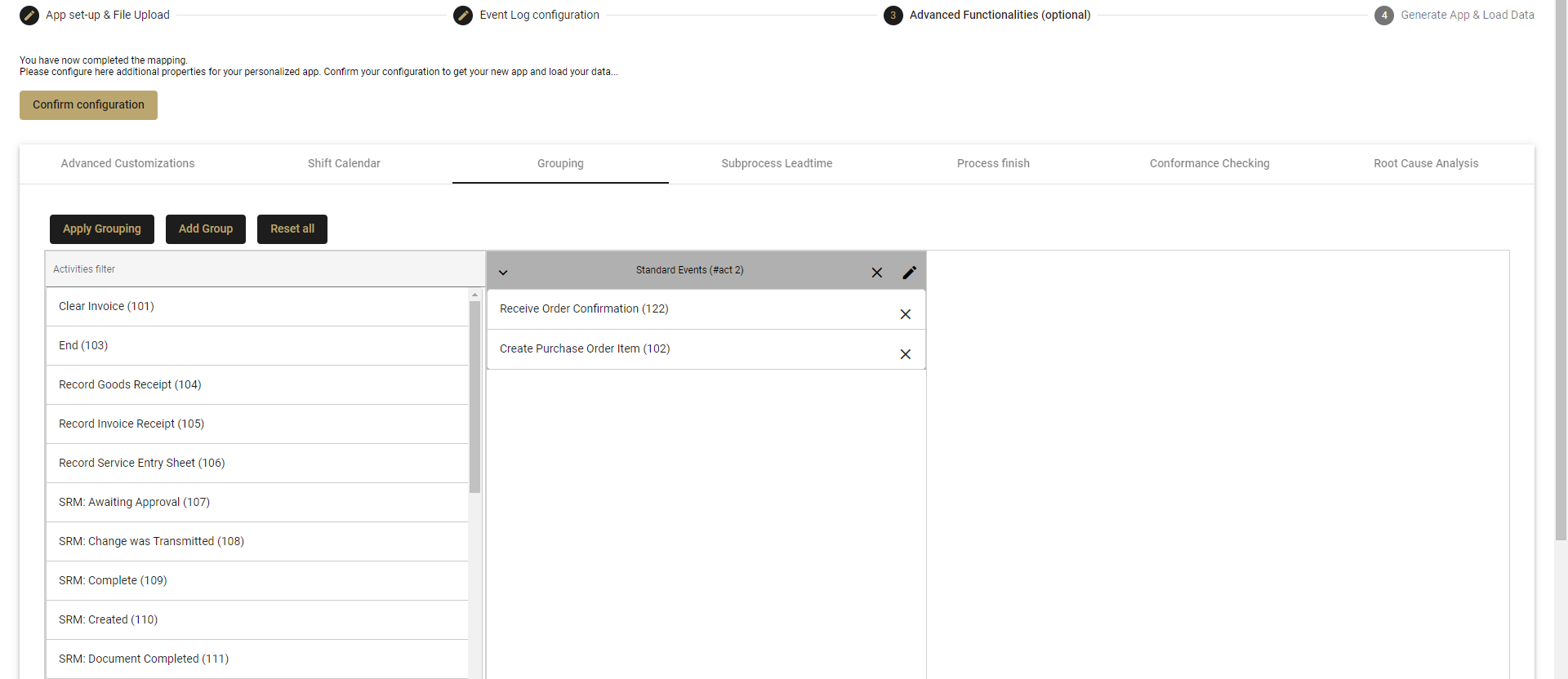
8.To configure partial processes open the tab Subprocess. Click on "Add Leadtime..." and give your subprocess a name in the field Qualifier. Select a start and end activity. It is the same configuration as in Define Subprocesses. You can delete subprocesses by clicking on the x symbol on the right side. When the subprocesses are completely defined click on "Apply Selection" to confirm.

9.To configure when the process is finished go to the tab Process finish. Tick the activities which define a process end. Multiple activities can be selected. Click on "Apply Selection" to save your configuration.
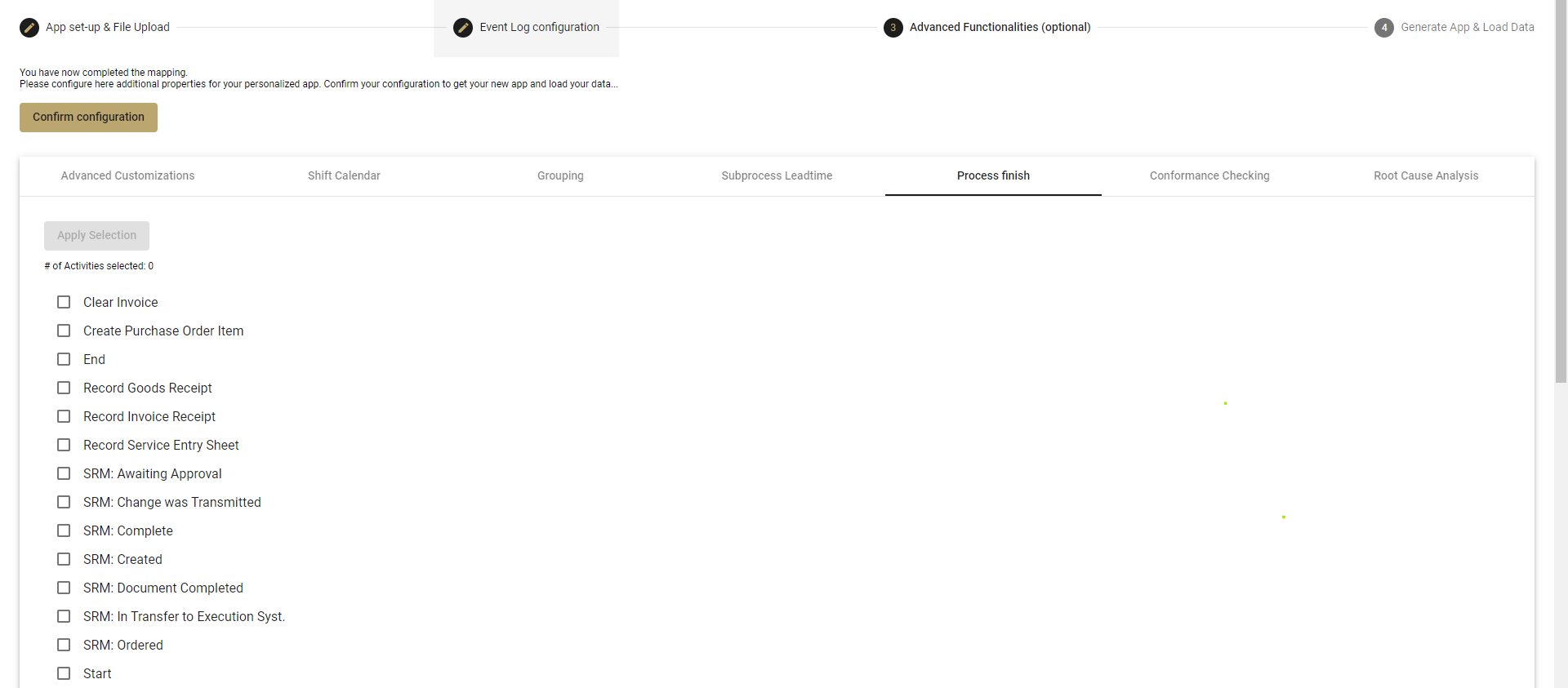
10.For Conformance Checking go to the tab Conformance Checking and click on Add Path. Name your happy path by clicking on the pen symbol. Then drag and drop the activities to define your happy path. Several happy paths can be defined. Delete a path by clicking on the x. Click on "Apply Conformance Checking" to save your configuration.

11.For Root Cause Analysis go to the tab Root Cause Analysis and select which optimization potentials (FlagName) you would like to have analyzed by the RCA. Furthermore, decide if you would like to include optimization potentials based on custom lead times. Click on "Apply Selection" to save your configuration.
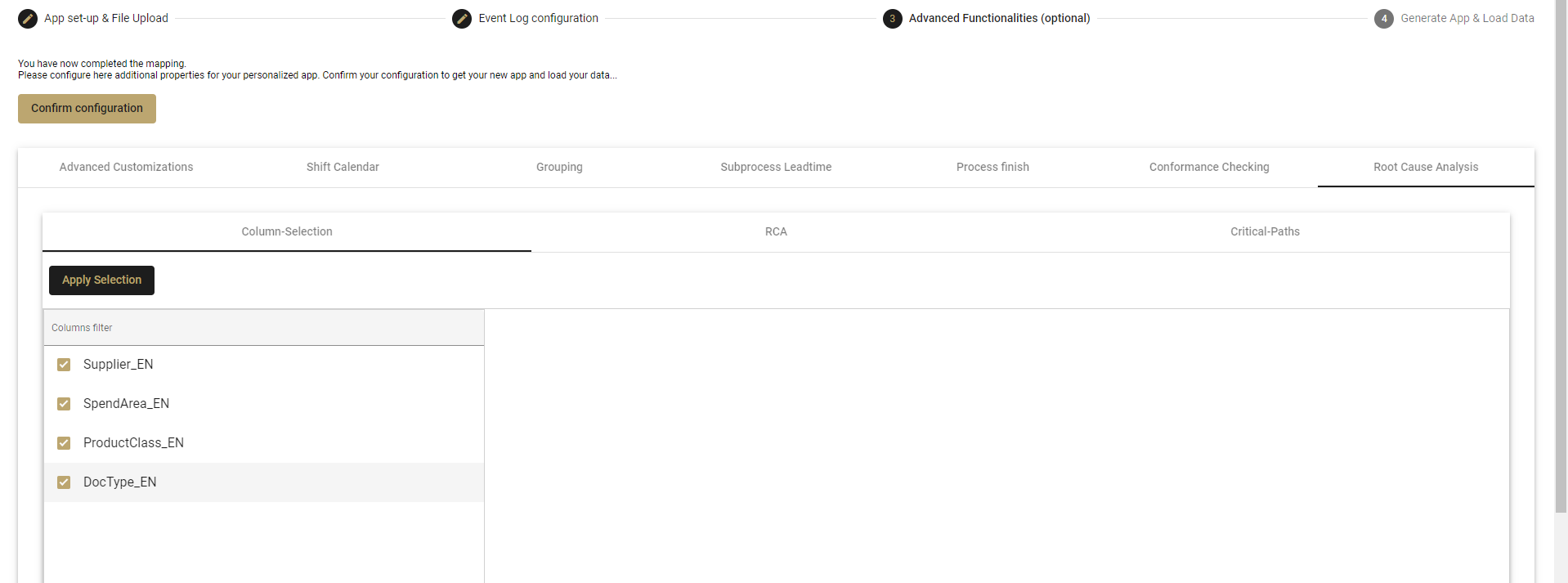
12.Finally, click on Generate to get the new app and load the data. A log for the app load will be written so you can see if your script runs successfully. A link to your app, which is published in your qlik hub is posted when the script finished running. When you click on the link the app will open and is ready to use.

